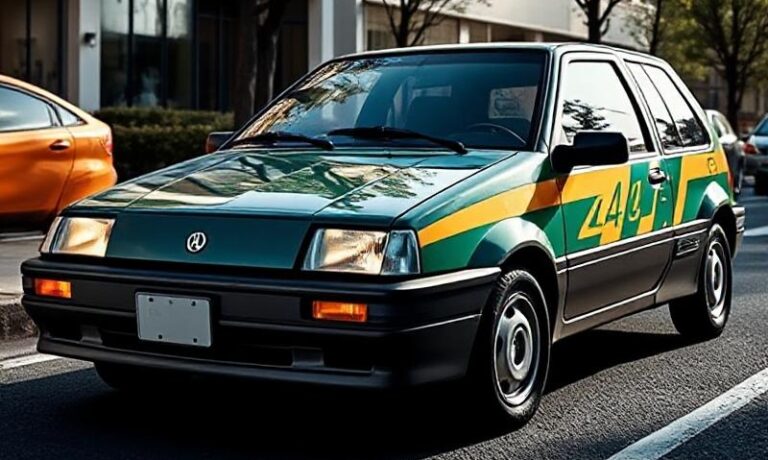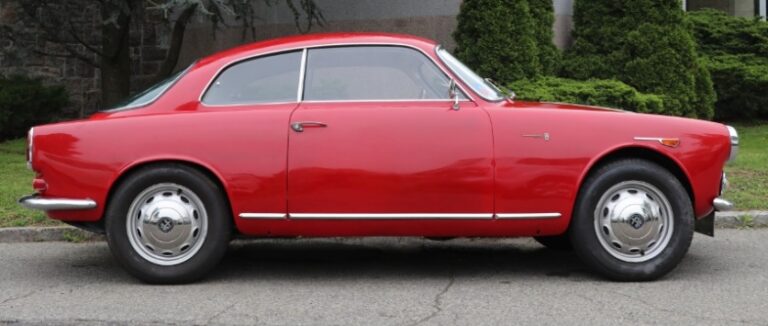The Evolution of the AMC Pacer: A Detailed Chronicle
The AMC Pacer, a car that is both celebrated and maligned, occupies a unique space in automotive history. Produced by the American Motors Corporation (AMC) between 1975 and 1980, the Pacer was a symbol of the 1970s, a period characterized by bold designs, experimentation, and, for some, the challenge of market viability. This article will explore the evolution of the AMC Pacer, its various models, trim levels, and its cultural impact on America.
Development and Concept
The AMC Pacer was conceived during a time when fuel-efficient vehicles were becoming increasingly important, particularly in the wake of the 1973 oil crisis. Its design was intended to appeal to a generation seeking practicality without compromising on personality. The Pacer was the result of a bold vision and innovative engineering strategies.
Designed by Richard Teague, the Pacer was among the first cars built on a clean-sheet design featuring a wide track and a unique, bulbous shape. This distinctive look was intended to offer spaciousness while maintaining a compact footprint, making the Pacer an innovative offering in the compact car segment.
Production Years and Trim Levels
The Pacer was produced from 1975 to 1980, with several models and trim levels available over its production run. Below is a detailed breakdown of its evolution throughout those years.
1975-1976: The Launch Era
The Pacer debuted in April 1975 as a 1975 model. Initially, it was marketed as a compact car, boasting a 97-inch wheelbase with 100 inches in overall length. Two primary models were introduced: the Pacer X (custom) and the Pacer D/L (Deluxe).
- Pacer X: This model featured a “fastback” rear and an emphasis on sportiness. It came equipped with a 3.8-liter inline-6 engine delivering a modest 120 horsepower.
- Pacer D/L: Positioned as a more luxurious offering, the D/L model included additional comfort features and options, appealing to buyers looking for style and utility.
In 1975, AMC also offered two trim packages: Standard and D/L, each catering to the customer’s desires for features and style.
1977: Mid-Cycle Enhancements
By 1977, the Pacer evolved somewhat, with slight cosmetic updates and the introduction of a new engine option. The 401 V8 engine became available, which significantly boosted performance for those desiring more power. However, due to the fuel crisis, most buyers still opted for the inline-6.
The Pacer X continued as a sporty option, while the addition of the Pacer D/L saw enhancements in upholstery and audio systems. The 1977 model year saw a unique exterior color palette that brightened the already eye-catching design.
1978: Aiming for Variety
The third production year, 1978, introduced a choice of hatchback or wagon bodystyles. To cater to a wider audience, the Pacer was now available in several trims:
- Pacer X
- Pacer D/L
- Pacer Limited: This newer trim offered a more upscale package with premium features, including upgraded interior materials and improved sound insulation.
In 1978, sales peaked, but concerns about fuel efficiency and the rising popularity of small Japanese imports began to emerge.
1979: The Shift
As the market dynamics shifted, AMC sought to address performance with additional attention to the Pacer’s shortcomings. The inline-6 engine was enhanced, while the V8 offered a more robust driving experience. The Pacer X was toned down in terms of its sporty image, aligning more closely with consumer demands for daily drivers over performance vehicles.
1979 saw the introduction of a “Pacer Wagon” option, capturing family-oriented buyers interested in versatility.
.

.
1980: The Final Model Year
By 1980, AMC’s market position took a challenging turn. Fuel-efficient cars were firmly in demand, and the Pacer’s unique design didn’t resonate as strongly as it once did. The 1980 Pacer saw minimal updates and changes, mostly consisting of color and interior options.
In its final year of production, the Pacer was available in a more stripped-down version called the Pacer D/L. Sales dwindled significantly, and production ceased at the end of the model year.
Cultural Impact
The AMC Pacer quickly became an icon of the late 1970s, embodying a spirit of individuality amidst a surge in practicality. Its quirky, unconventional design earned it a mixed reputation, but its cultural presence solidified through appearances in film and television.
Movies from the ’80s and beyond, such as the cult classic “Wayne’s World,” often included Pacers, further entrenching its position in pop culture as a symbol of unusual American automotive design.
Legacy
While the Pacer was discontinued after just six years, it left an indelible mark on the automotive landscape. In an era characterized by safety concerns, environmental shifts, and the relentless march of Japanese manufacturing prowess, the AMC Pacer represents both ambition and the struggle of an American icon.
Automotive enthusiasts and historians view the Pacer with a sense of nostalgia, appreciating it as a forward-thinking design despite its commercial struggles. Today, the Pacer has garnered a dedicated following, with restored models appearing at car shows and enthusiast events where they evoke nostalgia for a bolder era in American cars.
Conclusion
The AMC Pacer stands as a fascinating study of 1970s automotive design and consumer needs. From its bold entry into the market to its final sputter amid changing trends in the industry, the Pacer’s evolution tells a story of ambition, experimentation, and the realities of market economics. Despite its limited production run, its quirky charm continues to resonate with collectors and enthusiasts alike, securing its status as an icon of its time.
In retrospect, the AMC Pacer is more than just a vehicle; it is a part of a narrative exploring the balance between design innovation, practicality, and the enduring power of the automobile in American culture.







